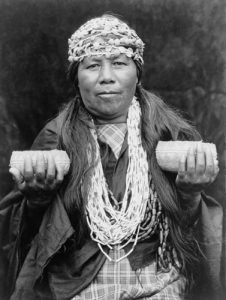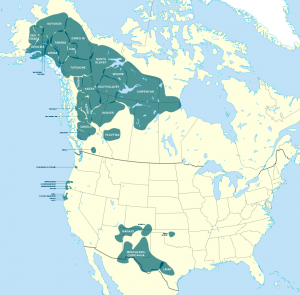The Athapascan Family was the most widely distributed of all the Indian linguistic families of North America, formerly extending over parts of the continent from the Arctic coast far into northern Mexico, from the Pacific Ocean to Hudson Bay at the north, and from the Colorado River to the mouth of the Rio Grande at the south. The languages that compose the Athapascan family are plainly related to each other and stand out from the other American languages with considerable distinctness because of certain peculiarities.
Phonetically they were rendered harsh and difficult for European ears because of a series of guttural sounds, use of tone, many continuants, and frequent checks and aspirations. The name Athabaskan was assigned by Albert Gallatin in his 1836 classification of the languages of North America.
The wide differences in physical type and culture and the differences in language point to a long separation of the family, certainly covering many centuries. The Athabaskan family is conventionally divided into three groups based largely on geographic distribution: Northern Athabaskan, Pacific Coast Athabaskan, and Southern Athabaskan. Northern Athabaskan was spoken in northern North America, particularly in Alaska and the Yukon, and included 31 languages. The Pacific Coast Athabaskan languages were spoken in southern Oregon and northern California and included seven different languages. The Southern Athabaskan languages were spoken primarily in the Southwest, including Arizona, New Mexico, Colorado, Utah, and Sonora, Mexico. Various groups spoke the languages of the Apache and Navajo peoples.
Compiled by Kathy Alexander/Legends of America, updated January 2023.
Also See:
List of Notable Native Americans


